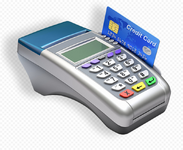- Joined
- 13.07.22
- Messages
- 446
- Reaction score
- 13,160
- Points
- 93

I am here today with a detailed breakdown of how a merchant can facilitate a $1 million transaction using a black card for a long-distance gold purchase(Fake purchase to cashout from merchant), without needing the physical card. This will cover both Protocol 101.1 and Protocol 101.2 along with the various POS options available.
Full Process for High-Value Transaction
Step-by-Step Transaction Process
- Buyer Initiates Transaction
- The buyer selects the gold item for purchase and agrees on the pricing and terms with the merchant.
- Merchant Uses POS System
- The merchant prepares to process the transaction through a POS terminal capable of handling high-value transactions, employing either Protocol 101.1 or 101.2.
- Card Information Retrieval
- For online or phone transactions, the buyer provides their card details, including:
- Card number
- Expiration date
- Card Verification Value (CVV)
- Billing address
- For online or phone transactions, the buyer provides their card details, including:
- Authorization Request
- The merchant's POS or payment gateway sends an authorization request with the transaction details (amount: $1 million) to the card network (e.g., Visa or Mastercard).
- Risk Assessment by Issuer
- The issuer conducts a risk assessment which includes:
- Verifying available credit.
- Checking transaction history for anomalies.
- Potentially contacting the cardholder.
- For large amounts, the card issuer may also verify the transaction via extra steps like calling the cardholder or sending a confirmation code.
- The issuer conducts a risk assessment which includes:
- Authorization Response
- If approved, the issuer sends an authorization code back to the merchant’s POS system. The response might look like:
- Status: Approved
- Code: 123456
- If denied, reasons may include insufficient credit, flagged fraud, or restrictions on large transactions.
- If approved, the issuer sends an authorization code back to the merchant’s POS system. The response might look like:
Handling Protocol 101.1 vs. 101.2
- Protocol 101.1:
- Basic security features, suitable for smaller transactions but may subject high-value transactions to increased scrutiny.
- Protocol 101.2:
- Enhanced security features, including tokenization and encryption. It is more robust against fraud and would be preferred for a $1 million transaction.
- Supports features like 3D Secure, adding layers of verification that may involve the buyer receiving a one-time password (OTP) or authentication through a mobile app.
Example Scenario for Protocol 101.2
Assuming the transaction uses Protocol 101.2:
- Merchant's System: Processes through a virtual terminal (e.g., a secure online payment gateway).
- Buyer Authenticates: The buyer might receive an SMS or app notification to confirm the transaction.
- Completion of Authorization: Once authenticated, the authorization goes through, providing a secure environment.
Settlement Process
- Transaction Completion: Once authorized, the merchant processes the transaction and provides the buyer with a receipt.
- Final Settlement: The request for funds is processed through the clearinghouse, and funds are transferred to the merchant's account. This may take a few days depending on the bank and transaction processing.
Alternative POS Options
- Mobile Wallets: Buyers can use mobile payment options like Apple Pay or Google Pay, linking directly to their cards, making secure transactions without needing the cardholder physically present.
- Virtual Payment Gateways: Online gateways like PayPal or Stripe can process large amounts with strong anti-fraud measures, benefiting from 3D Secure and similar protocols.
- Physical POS Systems: If the merchant has a brick-and-mortar presence, they can use advanced card readers that support high-value payments just as effectively.
- Cryptocurrency Transactions: In some cases, merchants may accept cryptocurrencies for high-value purchases, providing faster transactions and avoiding some traditional banking delays.
Conclusion
Navigating a $1 million transaction using a black card requires precise coordination between the merchant's POS system, the card issuer, and the buyer. Protocol 101.2 offers enhanced security for such high-value transactions, reducing the risk of fraud and ensuring compliance with payment standards. Various POS options, including mobile wallets and virtual gateways, provide flexibility and security for merchants and buyers engaging in large purchases remotely.
Ask questions in the comment if you have any






